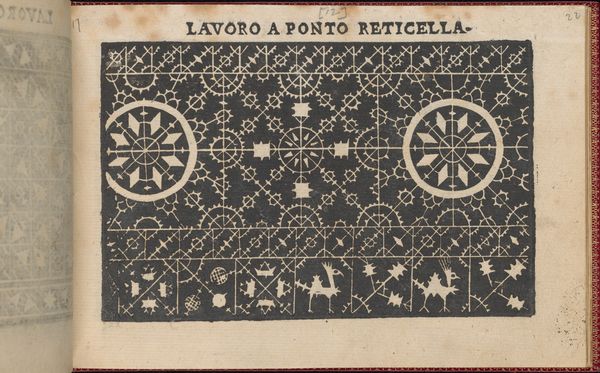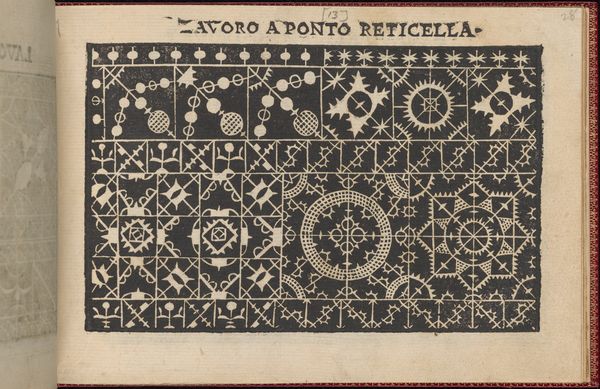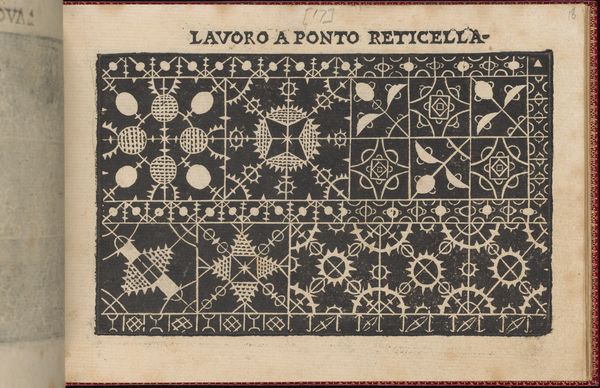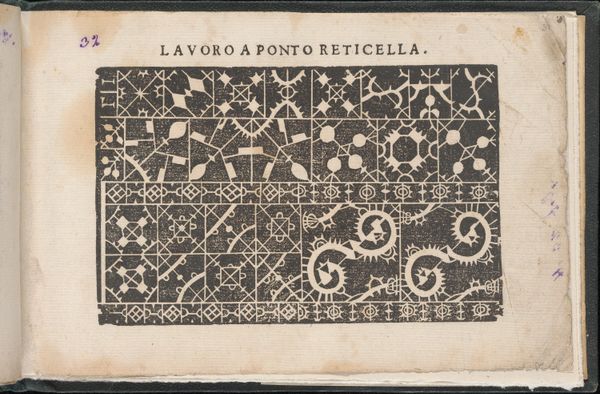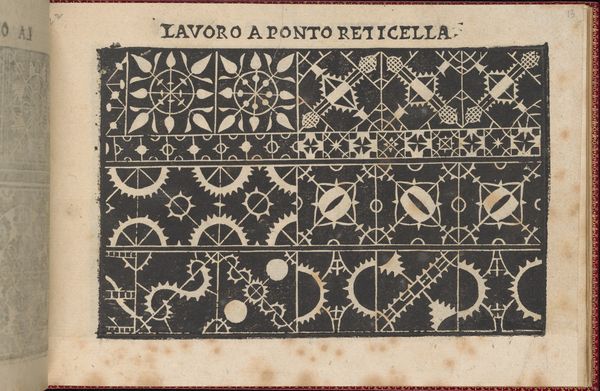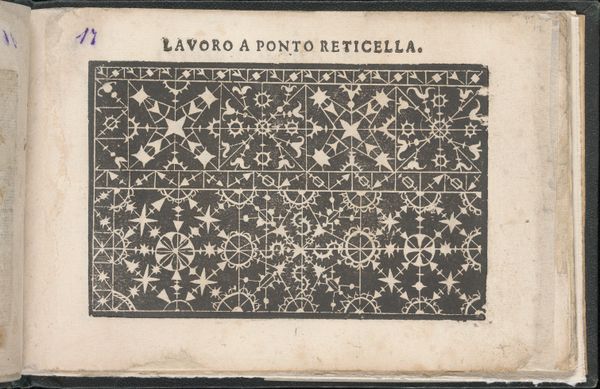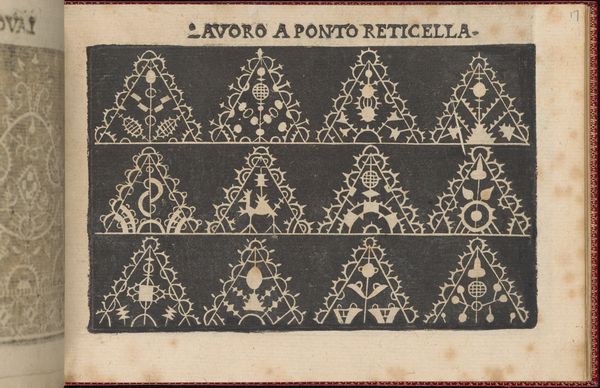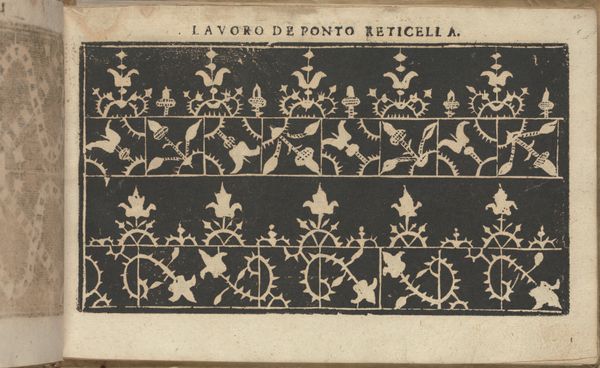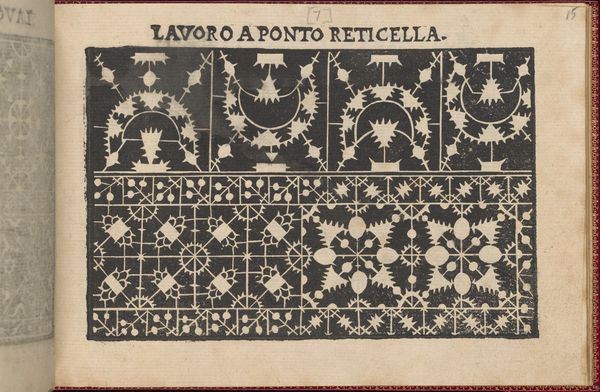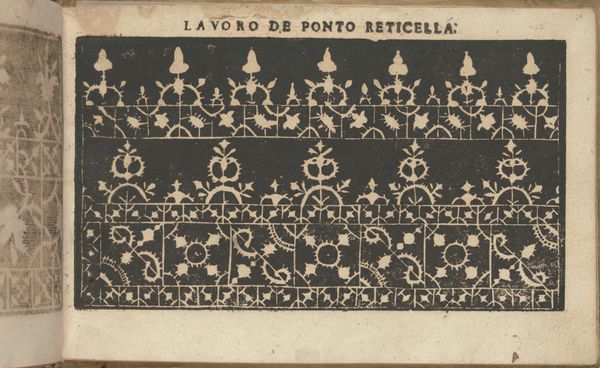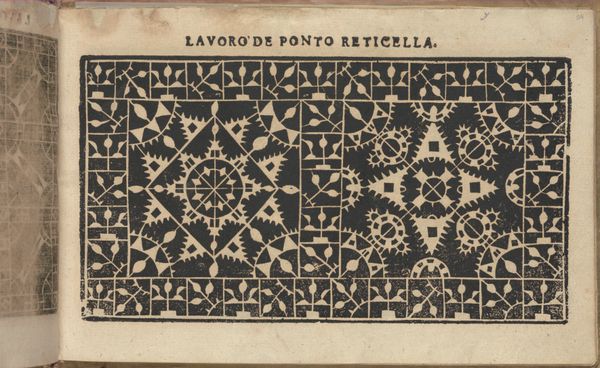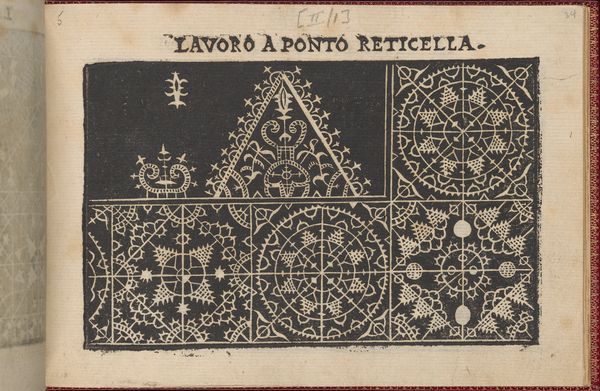
Pretiosa Gemma delle virtuose donne, page 21 (recto) 1600
0:00
0:00
drawing, print, engraving
#
drawing
#
medieval
# print
#
geometric
#
line
#
decorative-art
#
italian-renaissance
#
engraving
#
calligraphy
Dimensions: Overall: 4 3/4 x 6 11/16 in. (12 x 17 cm)
Copyright: Public Domain
Curator: Here we have a page, specifically page 21 recto, from Isabella Catanea Parasole's "Pretiosa Gemma delle virtuose donne," created around 1600. It is an engraving, now held at the Metropolitan Museum of Art. What strikes you immediately? Editor: It looks like blueprints for another dimension's garden. Stark, intricate… a little intimidating, like peering into a highly organized, alien world. All that stark geometry and then these weirdly organic floral shapes tangled up within. Curator: Indeed. Note how the composition utilizes a grid, dividing the space into a series of squares and triangles. Within each module, we find meticulously rendered geometric patterns interwoven with stylized floral motifs. This exemplifies a key element of formal Renaissance design. Editor: Absolutely. It's that contrast between hard, defined lines and these almost dreamlike natural elements that pulls me in. And the sheer density—every millimeter seems occupied by some pattern or shape. Do you think it was a study for needlepoint or lace? Curator: Precisely! The title itself gives us a clue, referencing "lavoro a ponto reticella," a type of needle lace popular at the time. These designs were intended as templates, offering virtuosas models for their own creations. Observe the elegance of line and the rhythmic repetition of forms; principles highly prized during the Italian Renaissance. Editor: So, women looking at this page imagined it rendered in thread? It gives it a curious tension, a feeling of potential, like un-spun stories waiting to happen, tiny narratives you can wear. And this page being part of a book elevates its significance; beyond craft, this symbolizes education and sophisticated female artistry in the 17th Century. Curator: A cogent point! Moreover, let us appreciate how Parasole, as a woman artist, successfully navigated the patriarchal structures of her era by creating works that both catered to and celebrated the artistic talents of women. The book and its prints served a dual purpose: instruction and, simultaneously, the advancement of women's roles within artistic spheres. Editor: Well, when I see something like this, I feel a little burst of rebellious, crafty inspiration! Maybe a whole quilt… with little hidden messages stitched in! Or is that getting away from Parasole's original, more refined vision? Curator: On the contrary, it demonstrates how art transcends time and form to invite new visions. It shows this was never merely functional; these patterns echo into futures unknown.
Comments
No comments
Be the first to comment and join the conversation on the ultimate creative platform.
